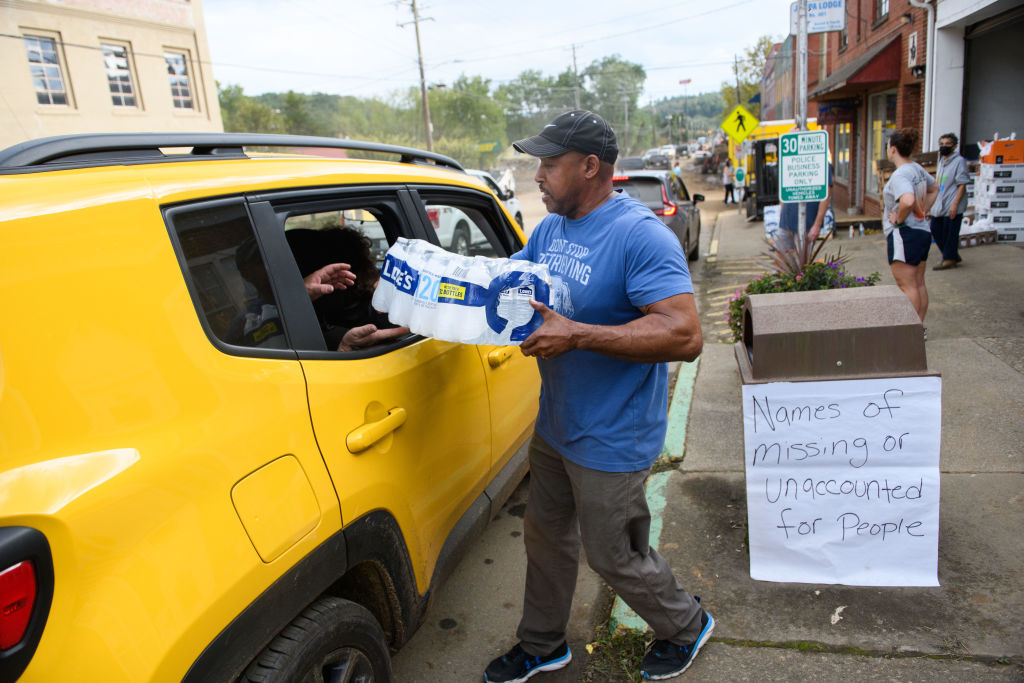Hurricane Helene caused extensive damage when it hit the United States last week, with at least 166 people confirmed dead and over 1 millions residents in multiple states still without power as of Wednesday morning, nearly a week after the storm made landfall in the continental United States. For some communities, like Asheville, North Carolina, the devastation is greater than many people would have imagined.

Why Helene caused ‘biblical devastation’ in places like Asheville
As Vox reported, Helene made landfall in Florida on Thursday as a Category 4 hurricane, a designation based on the storm’s top wind speed. For comparison, Hurricane Katrina was a Category 3 storm when it hit Louisiana and Mississippi in 2005. In addition to high winds, Helene’s extensive devastation resulted from Helene being particularly wide — 100 miles wider than the average hurricane — and the storm picking up a significant amount of water over the ocean before landfall. All this resulted in the storm causing extensive and widespread flooding on a scale rarely seen. The death toll from the storm may rise significantly as hundreds of people remain unaccounted for.

While Helene caused extensive damage in areas of states like Florida that are used to high-powered hurricanes, this storm also reached areas unaccustomed to heavy hurricane damage. One such place is Asheville, North Carolina, which has experienced extensive flooding, leaving some buildings almost entirely underwater and many damaged beyond repair. At least 40 people have been confirmed killed so far in Asheville, which, at 90,000 residents, is the largest city in western North Carolina, and the storm shut down all roads in the region. Ryan Cole, Buncombe County Emergency Services’ assistant director, described the flooding in Asheville as causing “biblical devastation.”
Government efforts and political responses to disaster
The effort to respond to the hurricane’s damage is immense, with FEMA reporting that 4,500 federal workers are currently mobilized to support state and local response efforts. President Joe Biden announced on Monday that he would visit North and South Carolina, including meeting with response officials in Raleigh, North Carolina, and flying over Asheville to observe the damage. The president said he’s limiting his time on the ground so that the logistics of his visit wouldn’t lead to “interrupting access to help there.” Biden also indicated that he will seek additional funding from Congress to fund relief efforts in the affected states.
Former President Donald Trump, meanwhile, visited Georgia to survey the damage caused by the hurricane. During his visit, Trump falsely told reporters that Republican Georgia Gov. Brian Kemp had been attempting to call President Biden about disaster relief but could not reach him. Kemp contradicted that story, telling reporters that he had spoken to Biden, who asked the governor what he needed in the state. Biden responded forcefully to Trump’s claims: “He’s lying. Let me give it to you straight: He’s lying, and the governor told him he was lying.”
Donald Trump is a liar.
I’m working with governors and local officials to help those impacted by Hurricane Helene. pic.twitter.com/N2rzfFEftV
— Joe Biden (@JoeBiden) October 1, 2024
Cities like Asheville may never be the same due to the loss of life and destruction of property caused by the storm. As government responders and others continue to sort through the damage caused by Helene and care for those affected by the hurricane, the current election cycle pales compared to the years it will take to repair much of the damage done by the storm.
